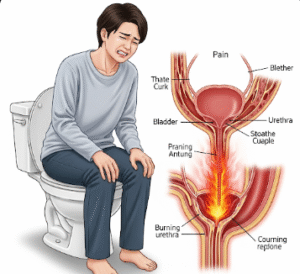Mental health stigma has long been a barrier to care in Korean society, rooted in cultural norms emphasizing endurance, conformity, and emotional restraint. But in recent years, change has begun. A combination of public awareness campaigns, policy reforms, NGO work, and increasing openness is shifting how mental illness is perceived and supported in Korea. Below is an overview of how stigma is being challenged, steps taken toward change, remaining obstacles, and what this means for individuals and institutions.
The Roots of Stigma in Korea
- Cultural norms of endurance: In many Korean contexts, suffering quietly and continuing despite hardship are seen as moral virtues. Expressing psychological distress is sometimes viewed as a weakness or burden.
- Fear of social consequences: Disclosure of mental health problems can affect one’s reputation, marriage prospects, job opportunities, or social standing.
- Lack of mental health literacy: Misunderstanding about psychiatric disorders, myths about treatment (e.g. “therapy is only for weak people”), and insufficient public discourse have kept stigma alive.
- Historical institutionalization and secrecy: For decades, mental illness was treated in large psychiatric hospitals, often with minimal transparency, reinforcing isolation between the “mentally ill” and general society.
These forces combined to make mental health a hidden issue for many Koreans.
Steps Korea Is Taking to Reduce Stigma
Public Awareness Campaigns & Education
- The government and NGOs have launched national campaigns that use stories of recovery, media messaging, and social influencers to normalize mental illness and encourage help-seeking.
- Mental health awareness weeks focus on encouraging people to talk, share their struggles, and understand that seeking help is a sign of strength, not weakness.
- Schools increasingly include mental health education—teaching students to recognize signs of distress, offer peer support, and know when to refer to professionals.
Policy & Legal Reforms
- Korea’s Mental Health and Welfare Act has been updated to strengthen patients’ rights, confidentiality, and standards of care, reducing fear of forced treatment or discrimination.
- The government is subsidizing mental health services, expanding community-based care (rather than institutionalization), and incentivizing clinics in underserved areas.
- Anti-discrimination measures in employment and insurance are being discussed to protect individuals who disclose mental health conditions.
Expanding Community & Peer Support
- Peer support groups, recovery networks, and mental health NGOs now offer safe spaces for people with lived experience to share, heal, and advocate.
- Community mental health centers (정신건강복지센터) throughout Korea provide counseling, outreach, mobile teams, and stigma reduction programs locally.
- Online support platforms and anonymous chat groups help people overcome shame or fear of seeking face-to-face services first.
Media, Storytelling & Role Models
- Celebrities, public figures, and mental health advocates increasingly speak publicly about their own struggles, helping normalize mental illness in Korean media.
- Korean dramas, films, and literature are beginning to portray mental illness more sensitively, showing recovery, complexity, and humanity rather than caricature.
- Social media campaigns and hashtags (e.g. #MentalHealthKorea) encourage sharing personal stories and promoting understanding.
Training Health Professionals & Changing Clinical Culture
- Medical schools and health professional training programs in Korea now include curriculum on mental health stigma, empathy training, communication, and psychiatric interviewing skills.
- Psychiatrists, psychologists, and primary care clinicians are encouraged to reduce paternalistic or stigmatizing attitudes, use patient-centered language, and engage families compassionately.
- Some hospitals establish “open doors” policies, where patients and families can learn about hospital psychiatric services in a non-intimidating way (e.g. tours, open days).
Remaining Challenges & Obstacles
- Persistent social shame: Deep cultural beliefs do not change quickly; older generations may resist open discussion of mental illness.
- Unequal access: Rural or underserved areas still lack mental health services, making stigma reduction symbolic without infrastructure.
- Workplace discrimination: Despite legal protections, some employers may penalize or avoid hiring individuals known to have a psychiatric history.
- Insurance and cost barriers: Even with subsidies, treatment costs, waiting times, and lack of insurance coverage discourage many.
- Overemphasis on severe disorders: Stigma often focuses on schizophrenia or psychosis, not recognizing more common conditions like anxiety or depression until severe.
- Quality and trust gaps: Some fear that mental health services may not be competent, safe, or confidential, which prevents people from using them.
What Individuals, Families & Institutions Can Do
For Individuals & Families
- Learn and use non-stigmatizing language (e.g. “having depression” rather than “crazy”).
- Share experiences discreetly when comfortable—personal stories have power to change perception.
- Encourage early help-seeking, not waiting until crisis.
- Support peers and family by listening without judgment and accompanying them to care when needed.
For Schools & Workplaces
- Provide training on mental health awareness, stress management, and support resources.
- Implement policies that protect confidentiality and prevent discrimination.
- Create safe channels for employees or students to seek help, such as referral systems or worker/student assistance programs.
For Clinicians & Mental Health Services
- Use person-centered and recovery-oriented care, acknowledging strengths and autonomy.
- Maintain confidentiality and ensure clear, respectful communication with patients and families.
- Engage in public outreach, media collaborations, and community talks to break stereotypes.
For Government & Policy Makers
- Expand funding for community mental health, early intervention, and rural access.
- Enforce anti-discrimination laws in employment, education, and health insurance.
- Support campaigns, media guidelines, and educational reforms that promote mental health literacy.
Signs of Progress & a Hopeful Future
Korea is slowly but meaningfully shifting. More people now acknowledge mental stresses openly. Mental health services are becoming part of routine public discourse rather than hidden taboo. Community centers, counseling, and recovery stories are more visible.
The direction is clear: mental illness should no longer be a disgrace, but part of human experience—something that societies respond to with compassion, resources, and dignity.
With sustained effort—across policy, culture, education, and healthcare—Korea can become a model for reducing mental health stigma in East Asia and beyond. Over time, breaking stigma will mean more people are willing to seek care, recover, and live with full dignity.













